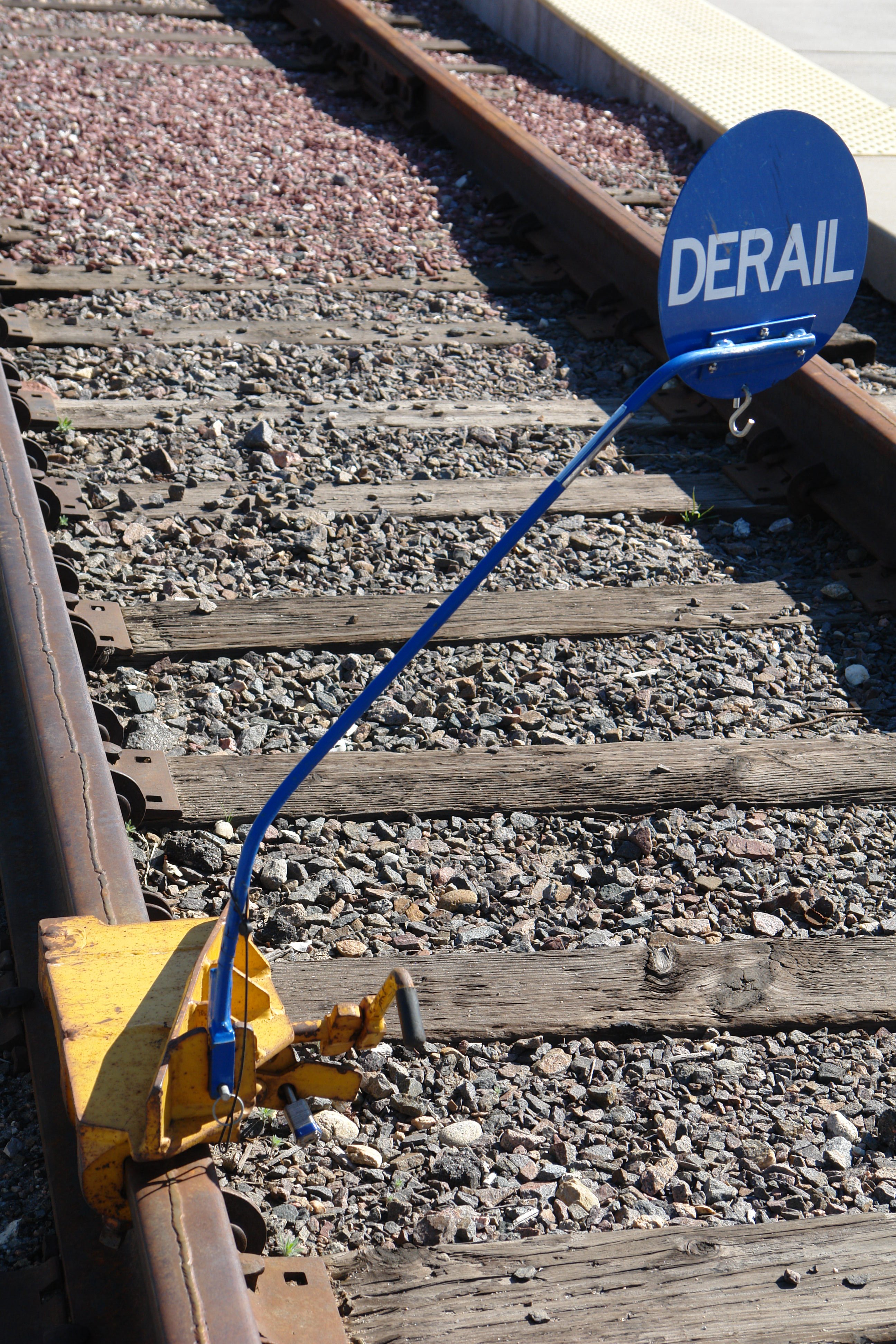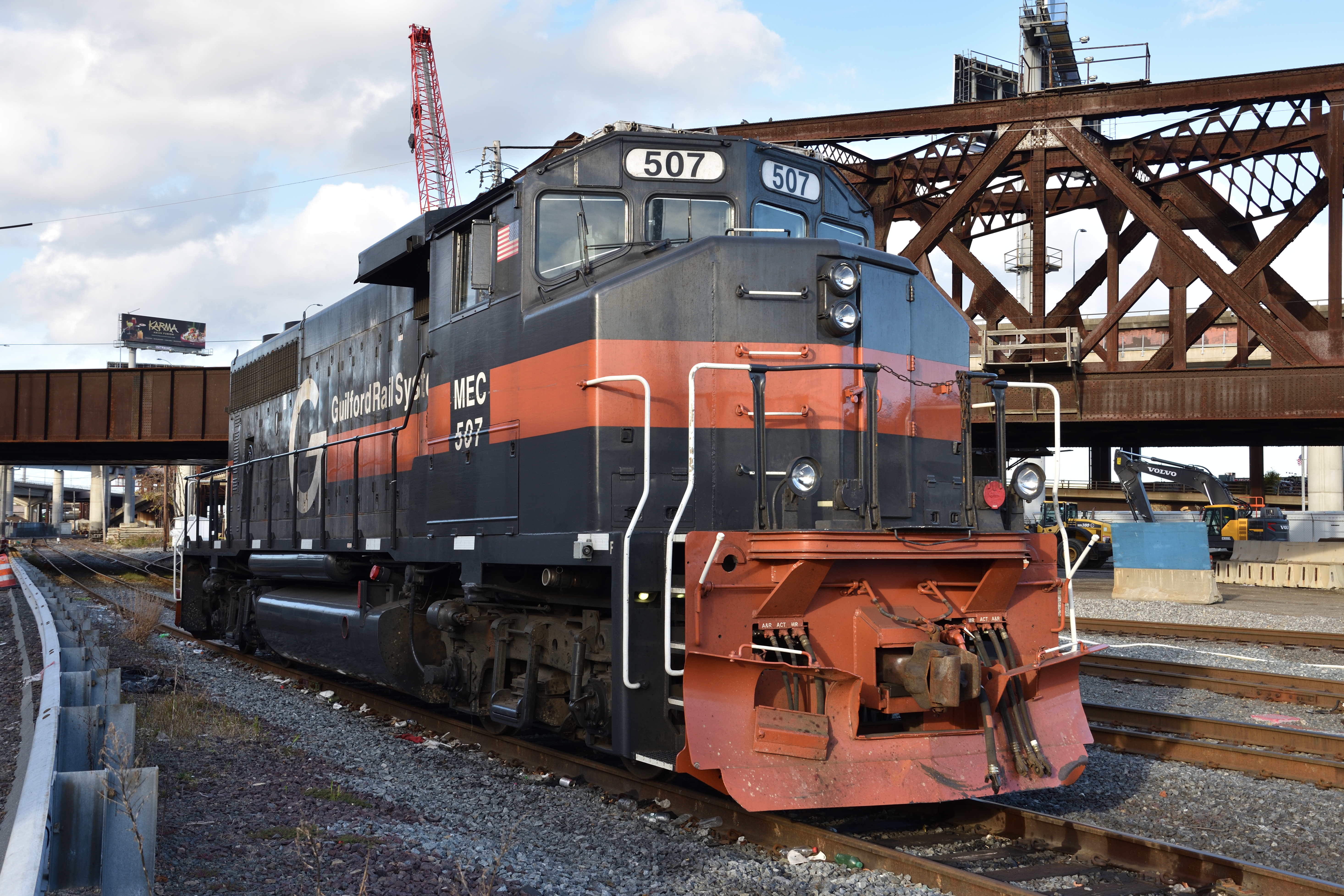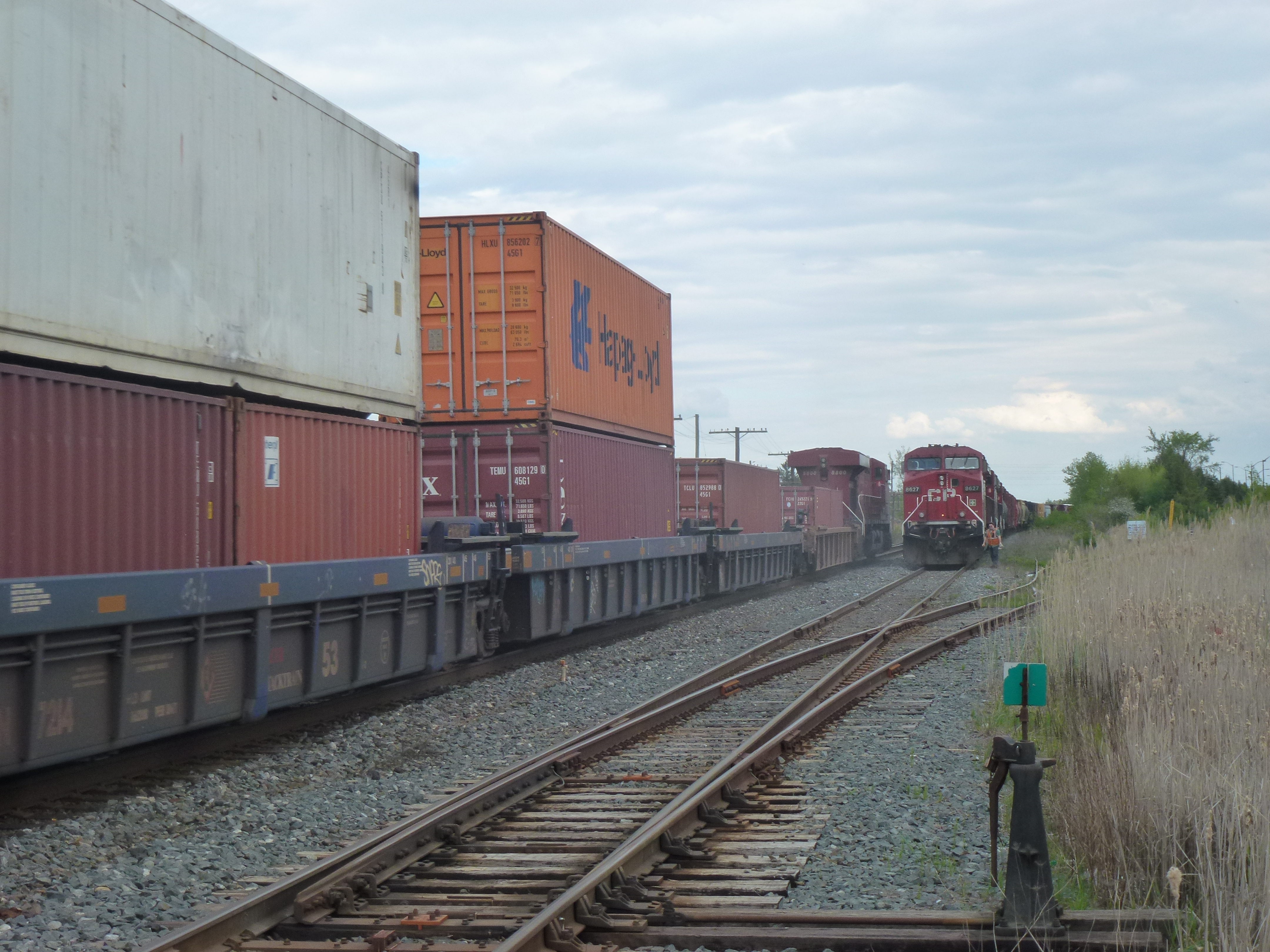|
CSX 8888 Incident
The CSX 8888 incident, also known as the Crazy Eights incident, was a runaway train event involving a CSX Transportation freight train in the U.S. state of Ohio on May 15, 2001. Locomotive #8888, an, was pulling a train of 47 cars, including possibly two cars loaded with hazardous chemicals, specifically molten phenol, a substance used in dyes and glues, and ran uncontrolled for just under two hours at up to . It was finally halted by a railroad crew in a catch locomotive, which caught up with the runaway train and Railway coupling, coupled their locomotive to the rear car. As of 2025, the locomotive is still in service, having been rebuilt and upgraded into an EMD SD40-2#SD40-3, SD40-3 as part of a refurbishment program carried out by CSX in 2015, although its number is now #4389. It was delivered as Conrail #6410 in September 1977. Timeline On May 15, 2001, a CSX locomotive engineer was using Locomotive #8888 to move a string of Railroad car, freight cars from track K12 to tra ... [...More Info...] [...Related Items...] OR: [Wikipedia] [Google] [Baidu] |
EMD SD40-2
The EMD SD40-2 is a AAR wheel arrangement#C-C, C-C diesel–electric locomotive built by Electro-Motive Diesel, EMD from 1972 to 1989. The SD40-2 was introduced in January 1972 as part of EMD's ''EMD Dash 2, Dash 2'' series, competing against the GE U30C. Although higher-horsepower locomotives were available, including EMD's own EMD SD45-2, SD45-2, the reliability and versatility of the SD40-2 made it one of the best-selling models in EMD's history, edged out only by the EMD GP9, GP9, and was the standard of the industry for several decades after its introduction. The SD40-2 was an improvement over the EMD SD40, SD40, with modular electronic control systems similar to those of the experimental DDA40X. Peak production of the SD40-2 was in the mid-1970s. Sales of the SD40-2 began to diminish after 1981 due to the oil crisis, increased competition from GE Dash 7 Series, GE's Dash-7 series and the introduction of the EMD SD50, which was available concurrently to late SD40-2 product ... [...More Info...] [...Related Items...] OR: [Wikipedia] [Google] [Baidu] |
Dead Man's Switch
A dead man's switch is a switch that is designed to be activated or deactivated if the human operator becomes incapacitated, such as through death, loss of consciousness, or being bodily removed from control. Originally applied to switches on a vehicle or machine, it has since come to be used to describe other intangible uses, as in computer software. These switches are usually used as a form of fail-safe where they stop a machine with no operator from a potentially dangerous action or incapacitate a device as a result of accident, malfunction, or misuse. They are common in such applications as locomotives, aircraft refuelling, freight elevators, lawn mowers, tractors, personal watercraft, outboard motors, chainsaws, snowblowers, treadmills, snowmobiles, amusement rides, and many medical imaging devices. On some machines, these switches merely bring the machines back to a safe state, such as reducing the throttle to idle or applying brakes while leaving the machines still ... [...More Info...] [...Related Items...] OR: [Wikipedia] [Google] [Baidu] |
Transportation In Hancock County, Ohio
Transport (in British English) or transportation (in American English) is the intentional movement of humans, animals, and goods from one location to another. Modes of transport include air, land (rail and road), water, cable, pipelines, and space. The field can be divided into infrastructure, vehicles, and operations. Transport enables human trade, which is essential for the development of civilizations. Transport infrastructure consists of both fixed installations, including roads, railways, airways, waterways, canals, and pipelines, and terminals such as airports, railway stations, bus stations, warehouses, trucking terminals, refueling depots (including fuel docks and fuel stations), and seaports. Terminals may be used both for the interchange of passengers and cargo and for maintenance. Means of transport are any of the different kinds of transport facilities used to carry people or cargo. They may include vehicles, riding animals, and pack animals. Vehicles may includ ... [...More Info...] [...Related Items...] OR: [Wikipedia] [Google] [Baidu] |
Unstoppable (2010 Film)
''Unstoppable'' is a 2010 American disaster thriller film directed and produced by Tony Scott, written by Mark Bomback, and starring Denzel Washington and Chris Pine. It is based on the real-life CSX 8888 incident, telling the story of a runaway freight train and the two men who attempt to stop it. It was the last film Scott directed before his death in 2012. The film was released in the United States on November 12, 2010, by 20th Century Fox. It received generally positive reviews from critics and grossed $167.8 million against a production budget between $85–100 million. It was nominated for an Oscar for Best Sound Editing at the 83rd Academy Awards, and for Best Action Movie at the 2011 Critics' Choice Movie Awards, but lost to '' Inception'' in both cases. Plot A botched switching operation by yard hostlers Dewey and Gilleece at an Allegheny and West Virginia Railroad (AWVR) yard in northern Pennsylvania results in a runaway freight train pulled by locomotive 777 (T ... [...More Info...] [...Related Items...] OR: [Wikipedia] [Google] [Baidu] |
Ohio State Route 31
State Route 31 (SR 31) is a Ohio State Route that runs between Marysville and Kenton in the US state of Ohio. The southern terminus of SR 31 is at an intersection with SR 38 in downtown Marysville and the northern terminus is at an intersection with U.S. Route 68 (US 68), in downtown Kenton. None of the highway is listed on the National Highway System. Most of the route is a rural two-lane highway and passes through both farmland and residential properties. The highway was first signed in 1926 on much of the same alignment as today. SR 31 replaced the SR 21 designation of the highway which dated back to 1923; SR 21 ran between Pomeroy and Findlay. Some of the route became US 68 in 1933, with another section becoming US 33 in 1938. The southern terminus was relocated to Columbus in the late 1930s and in the early 1940s the southern terminus was moved to Marysville. The northern terminus was moved to Kenton in the early 1950s. ... [...More Info...] [...Related Items...] OR: [Wikipedia] [Google] [Baidu] |
Trainmaster (occupation)
The H-24-66, or Train Master, is a Diesel-electric transmission, diesel-electric railroad locomotive produced by Fairbanks-Morse and its licensee, Canadian Locomotive Company. These six-axle hood unit road switchers were used in the United States and Canada during the 1950s. They were the successor to the unsuccessful Consolidated line of cab units produced by F-M and CLC in the 1950s. Each locomotive produced 2,400 horsepower (1.8 MW). Like other F-M locomotives, the Train Master used an opposed piston engine, opposed-piston Prime mover (locomotive), prime mover. It rode on a pair of drop-equalized three-axle "Trimount" bogie, trucks, giving it a AAR wheel arrangement#C-C, C-C wheel arrangement. Overview Advertised by Fairbanks-Morse as "the most useful locomotive ever built", the 2,400-horsepower (1.8 MW) H-24-66 Train Master was the most powerful single-engine diesel locomotive at its introduction in 1953. No competitor offered a locomotive with an equal horsepower rating unt ... [...More Info...] [...Related Items...] OR: [Wikipedia] [Google] [Baidu] |
The Blade (Toledo, Ohio)
''The Blade'', also known as the ''Toledo Blade'', is a newspaper in Toledo, Ohio, published daily online and printed Thursday and Sunday by Block Communications. The newspaper was first published on December 19, 1835. Overview The first issue of what was then the ''Toledo Blade'' was printed on December 19, 1835. It has been published daily since 1848 and is the oldest continuously run business in Toledo. David Ross Locke gained national fame for the paper during the Civil War era by writing under the pen name Petroleum V. Nasby. Under this name, he wrote satires ranging on topics from slavery, to the Civil War, to temperance. President Abraham Lincoln was fond of the Nasby satires and sometimes quoted them. In 1867 Locke bought the ''Toledo Blade''. The paper dropped "Toledo" from its masthead in 1960. In 2004 ''The Blade'' won the Pulitzer Prize for Investigative Reporting with a series of stories entitled "Buried Secrets, Brutal Truths". The story brought to light the st ... [...More Info...] [...Related Items...] OR: [Wikipedia] [Google] [Baidu] |
EMD GP40-2
The EMD GP40-2 is a 4-axle diesel-electric locomotive built by General Motors Electro-Motive Division as part of its Dash 2 line between April 1972 and December 1986. The locomotive's power is provided by an EMD 645E3 16- cylinder engine which generates . Production Standard GP40-2 production totaled 861 units, with 817 built for U.S. railroads, 44 for Mexican railroads. Furthermore, 279 GP40-2s were built by General Motors Diesel (GMD) between 1974 and 1976. In addition, three GP40P-2s, passenger versions of the GP40-2, were built in 1974. Total production of the GP40-2 and its variations totaled 1,143 units. Performance With the 62:15 gearing (65-70 mph maximum) EMD rated the GP40-2 at 55,400 lb continuous tractive effort. Some had PF21 module that reduced the output below 23 mph, lowering continuous speed down to 11 mph. Original buyers ;GP40-2LW ;GP40P-2 Rebuilds Union Pacific has rebuilt 129 of their GP40's and GP40-2's into GP40N ... [...More Info...] [...Related Items...] OR: [Wikipedia] [Google] [Baidu] |
Siding (rail)
In rail terminology, a siding is a low-speed track section distinct from a running line or through route such as a main line, branch line, or spur. It may connect to through track or to other sidings at either end. Sidings often have lighter rails, meant for lower speed or less heavy traffic, and few, if any, signals. Sidings connected at both ends to a running line are commonly known as loops; those not so connected may be referred to as single-ended or dead-end sidings, or (if short) stubs. Functions Sidings may be used for marshalling (classifying), stabling, storing, loading, and unloading rail vehicles. Common sidings store stationary rolling stock, especially for loading and unloading. Industrial sidings (also known as spurs) go to factories, mines, quarries, wharves, warehouses, some of them are essentially links to industrial railways. Such sidings can sometimes be found at stations for public use; in American usage these are referred to as team tracks (after ... [...More Info...] [...Related Items...] OR: [Wikipedia] [Google] [Baidu] |
Derail
A derail or derailer is a device used to prevent fouling (blocking or compromising) of a rail track (or collision with anything present on the track, such as a person, or a train) by unauthorized movements of trains or unattended rolling stock. The device works by derailing the equipment as it rolls over or through it. Although accidental derailment is damaging to equipment and track, and requires considerable time and expense to remedy, derails are used in situations where there is a risk of greater damage to equipment, injury or death if equipment is allowed to proceed past the derail point. Applications Derails may be applied: *where sidings meet main lines or other through tracks *at junctions or other crossings to protect the interlocking against unauthorized movement *temporarily at an area where crews are working on a rail line *approaching a drawbridge, dead end, or similar hazard. Design There are four basic forms of derail. Wedge The most common form is a w ... [...More Info...] [...Related Items...] OR: [Wikipedia] [Google] [Baidu] |
Derail Portable
A derail or derailer is a device used to prevent fouling (blocking or compromising) of a rail track (or collision with anything present on the track, such as a person, or a train) by unauthorized movements of trains or unattended rolling stock. The device works by derailing the equipment as it rolls over or through it. Although accidental derailment is damaging to equipment and track, and requires considerable time and expense to remedy, derails are used in situations where there is a risk of greater damage to equipment, injury or death if equipment is allowed to proceed past the derail point. Applications Derails may be applied: *where sidings meet main lines or other through tracks *at junctions or other crossings to protect the interlocking against unauthorized movement *temporarily at an area where crews are working on a rail line *approaching a drawbridge, dead end, or similar hazard. Design There are four basic forms of derail. Wedge The most common form is a wedg ... [...More Info...] [...Related Items...] OR: [Wikipedia] [Google] [Baidu] |
Traction Motor
A traction motor is an electric motor used for propulsion of a vehicle, such as locomotives, electric vehicle, electric or hydrogen vehicles, or electric multiple unit trains. Traction (engineering), Traction motors are used in electrically powered railway vehicles (electric multiple units) and other electric vehicles including electric milk floats, trolleybuses, elevators, roller coasters, and conveyor systems, as well as vehicles with electrical transmission systems (Diesel locomotive#Transmission types, diesel–electric locomotives, electric hybrid vehicles), and battery electric vehicles. Traction motor companies The word ''traction'' from Latin, being the Agent (grammar), agent noun of ''trahere'' "to pull" in the sense of "drawn" was used for the naming of traction engines developed circa 1870. The first experimental electric traction motor tramway of 1875 was rapidly developed internationally for city use. In the 19th century traction motor passenger car companies ... [...More Info...] [...Related Items...] OR: [Wikipedia] [Google] [Baidu] |








